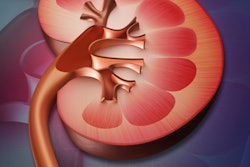Wednesday, December 4 | 11:10 a.m.-11:20 a.m. | SSK06-05 | Room S103AB
The use of CT pulmonary angiography (CTPA) to evaluate pregnant women suspected of having a pulmonary embolism (PE) has increased over the past two decades, despite low detection rates, researchers from Switzerland will report in this presentation.The researchers from Lausanne University Hospital retrospectively examined the CTPA utilization rates for pregnant women at their institution during the past 17 years. The average gestational age was 28 weeks, and clinicians acquired the CTPA scans using four different scanners.
The group's analysis revealed a fourfold increase in CTPA usage rates, with only 7% of the exams turning out to be positive.
However, CTPA did uncover significant alternative diagnoses, including pulmonary infiltrates and pleural effusion, in 30% of the patients. What's more, the group noted that advances in CT technology resulted in an overall decrease in radiation dose of 30% during the same period.
Though CTPA rarely confirms acute pulmonary embolism in pregnant women, it does frequently identify alternative diagnoses, Dr. David Rotzinger told AuntMinnie.com.
"This means that CTPA is still useful in such patients since alternative diagnoses often influence treatment decisions, but also highlights the need to develop better patient selection strategies to help minimize the use of CT in patients who will most likely have a normal examination," he said.




















